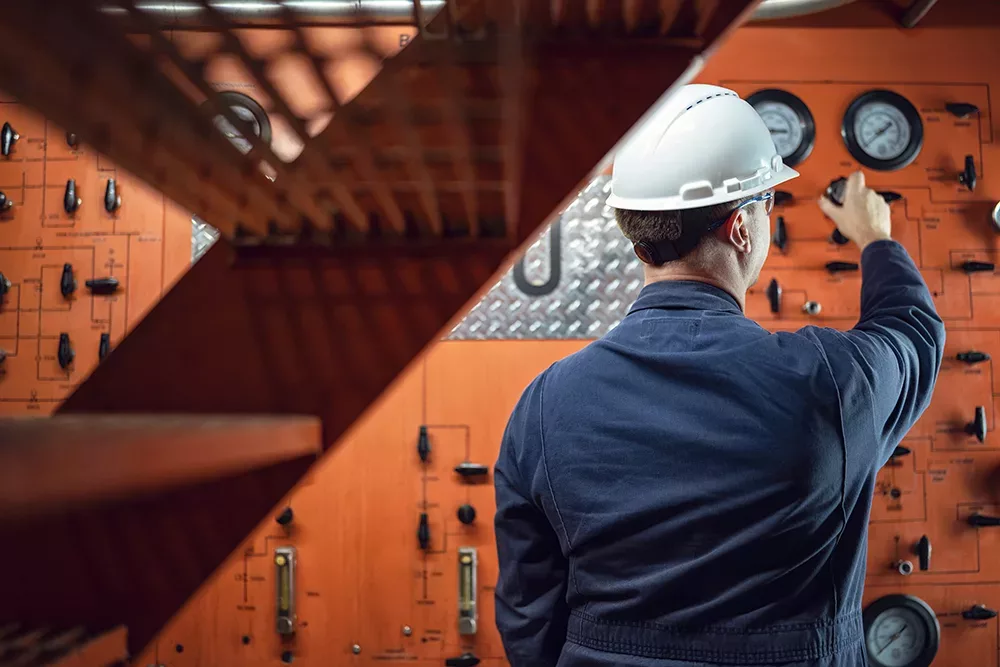
Industry and governments must do a better job showing workers a decarbonized oil and gas sector will mean more – not less – sustainable jobs in the future, says the leader of one of Canada’s most prominent skilled labour unions.
Sean Strickland, executive director of Canada’s Building Trades Unions (CBTU), says skilled trades workers – including the more than 600,000 CBTU members – need to be made aware of new opportunities on the road to net zero that will be created through the Pathways Alliance and other transformative emissions reduction plans.
And Strickland believes younger workers, keen to see increased environmental protection, can be attracted to the industry if it does a good job convincing them that it has a realistic, ambitious and achievable decarbonization plan.

Sean Strickland executive director of Canada’s Building Trades Unions
“We need to do a better job communicating to construction workers and the people employed in oil and gas that the future through this transition – if we manage it right – is going to be much brighter and will create more jobs down the road than we have now,” said Strickland.
“We need to find a way to provide, as much as we can, more certainty around the future and that means that political leaders and businesses like Pathways Alliance stepping up and saying this is what we’re doing to get to net zero and these are the kinds of jobs it is going to mean for you.”
Strickland, who met with Pathways Alliance and member companies recently, said the Alliance’s proposed carbon capture and storage (CCS) project – expected to employ up to 35,000 workers during the construction phase – is exciting for the 14 affiliated unions from coast to coast that make up CBTU’s membership.
“It’s tremendously exciting from a variety of different perspectives, from the economic opportunity to diversify our membership, for more employment opportunities for Indigenous Canadians and other non-traditional underrepresented groups, such as the LGBTQ+ community.
“We really need to grow and diversify our industry and a project like this is transformational for our industry and for our trades of the future.”
The Pathways Alliance – comprised of Canadian Natural, Cenovus Energy, ConocoPhillips Canada, Imperial, MEG Energy and Suncor Energy – is collaborating on a proposed CCS network that would be one of the world’s largest.
The network is designed to have capacity to transport captured CO2 from more than 20 oil sands facilities to a hub in the Cold Lake region for safe, permanent underground storage.
The multi-stage project is anticipated to reduce net CO2 emissions from operations by 10 to 12 million tonnes a year from several oil sands facilities by 2030. That’s about half of Pathways Alliance’s overall goal of reducing emissions from operations (Scope 1 and Scope 2 emissions) by 22 million tonnes a year by the end of this decade.
“It’s also transformational for Canada. When you look at the global dynamic of reducing carbon and the price on carbon in Canada, how do we sustain this fantastic industry that we have, this fantastic resource that we have in Canada, and transition it to a net zero environment,” he said.
“I mean that is a hell of a big challenge but it’s a challenge that we need to address as Canadians, and we’re really pleased to be part of the conversation with Pathways Alliance and its partners to make that a reality.”
Of CBTU’s 60,000 Alberta members, Strickland estimates 50,000 of them work in the oil and gas industry.
He acknowledges that many of them see the words net zero and assume that it means net zero jobs which can be scary for them.
“These people have good, middle-class, high paying jobs so it’s important for us for a variety of reasons to continue to strengthen that partnership as we go forward and help workers and middle-class families sustain their livelihoods and their quality of life as we transition to energy, oil and gas 2.0.
“We’re not immune to the reality of climate change and the fact we need to reduce carbon. We get it. We need to do that.
“Our position is how do we manage that in a way that maintains the partnership that we have with the oil and gas industry, and sustain the jobs we have, to the best ability that we can, while we manage the transition to the new technologies of the future so that no worker gets left behind.”
Pathways Alliance President Kendall Dilling says it is vital that the industry start having discussion with labour groups and the construction industry on the Pathways Alliance project now, even though construction on the project could still be up to three years away.
Ensuring there are enough skilled workers for the massive project and that it is done in an orderly way means those talks need to start right way.
“There is an incredible natural alignment here,” said Dilling. “What we are proposing to do is a massive decarbonization project that requires a lot of people.
“It makes so much sense for us to work together and to start early on that journey.”
As for Strickland, this is an opportunity that can’t be wasted.
“We’ve got to get off our butts, get the regulatory stuff in place. We need to make those investments and we need to send strong signals to the Canadian worker and the international marketplace that we are serious about this.
“We can’t lose this opportunity The stakes are really high.”

Our people, their stories
Passionate, dedicated people are behind every innovation and every step forward.